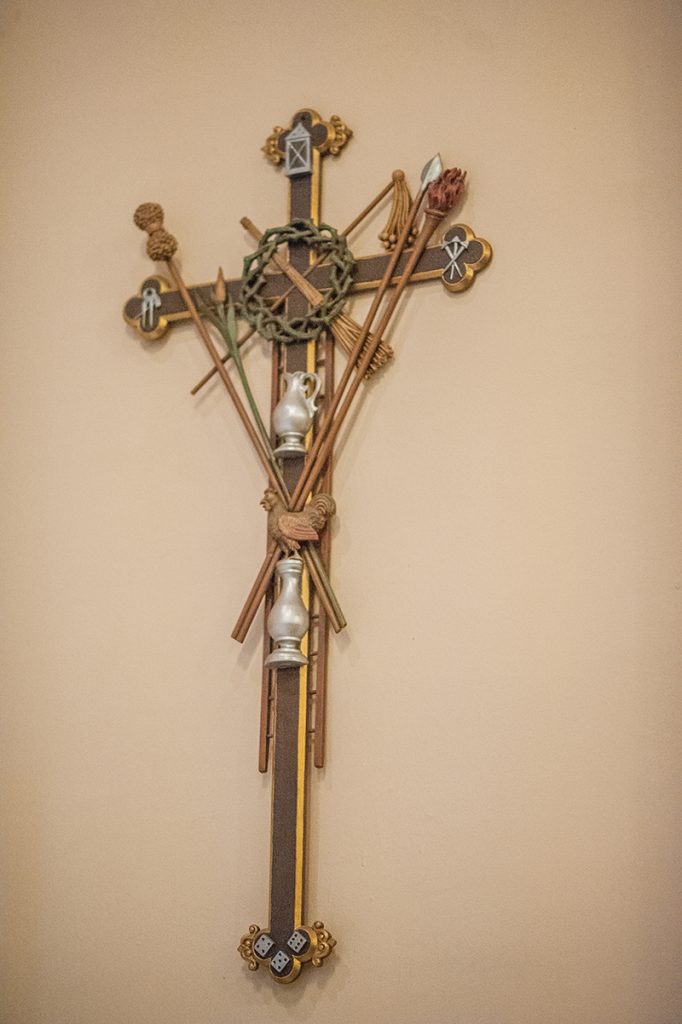
by Father Mark Goldasich
Whoa, how did I never notice that?
This thought briefly crossed my mind this past Friday evening as I led Stations of the Cross at the parish. I was standing at the Tenth Station, Jesus Dies on the Cross. Even though I’ve looked at that Station scores of times over the years, I’d never paid attention to the figure of the Blessed Mother depicted there.
She appears to have fainted or been overcome with grief and has collapsed into the arms of John the Apostle. I was deeply touched by this image.
It led me to think about how many times I look but do not see. Probably most Leaven readers are familiar with the term “lectio divina,” which refers to “holy reading” or “meditative reading,” especially of the Scriptures.
Folks may not be as familiar with another prayer method known as “visio divina,” or “holy looking” at a picture, photo or work of art. As with “lectio divina,” we’re invited with “visio” to slow down, notice and ponder.
To illustrate “visio divina,” there’s a photo in this column of the Lenten cross carried during Stations of the Cross at my home parish of St. John the Baptist in Kansas City, Kansas, when I was a kid. The cross normally hangs on the north wall of the church and displays items associated with the Passion.

Using “visio divina,” let’s look first at the top of the cross. There, you’ll notice a lantern used at the Garden of Gethsemane. As you proceed down the vertical arm of the cross, you see vessels of wine and myrrh or gall (Mk 15:23; Mt 27: 34), and the rooster that crowed after Peter denied Jesus three times (Lk 22:60).
At the bottom of the cross are the dice cast by the soldiers for Christ’s garment (Jn 19:24). Incidentally, the numbers on the dice total “15,” which might be a subtle reference to a “Fifteenth Station,” the Resurrection.
On the right side of the horizontal beam, you see the nails used to crucify Jesus; on the left side are the hammer and tongs (for removing the nails). In the center of the cross is the crown of thorns (Mk 15:17).
Diagonally positioned on the cross are the scourges and sticks used to beat Jesus; the spear that pierced his side as he hung on the cross (Jn 19:34); the reed put in his hand while being mocked (Mt 27:29); and the sponge soaked in wine and mounted on a reed that a bystander tried to give to Jesus as he was dying (Mt 27:48).
Finally, mounted on the back of the cross is a ladder used to remove the body of Jesus from the cross. The Scripture references above show how “visio” and “lectio” can go hand in hand.
To celebrate these last weeks of Lent, consider this prayer of your eyes. Take time to examine the sacred art found in your parish. Prayerfully look at one of the Stations, a particular statue or a stained-glass window. You may even want to check out some sacred art at a local museum, in a book or online.
“Visio divina” may be the ideal way for busy people to pray because it proves clearly why a picture is worth a thousand words.


